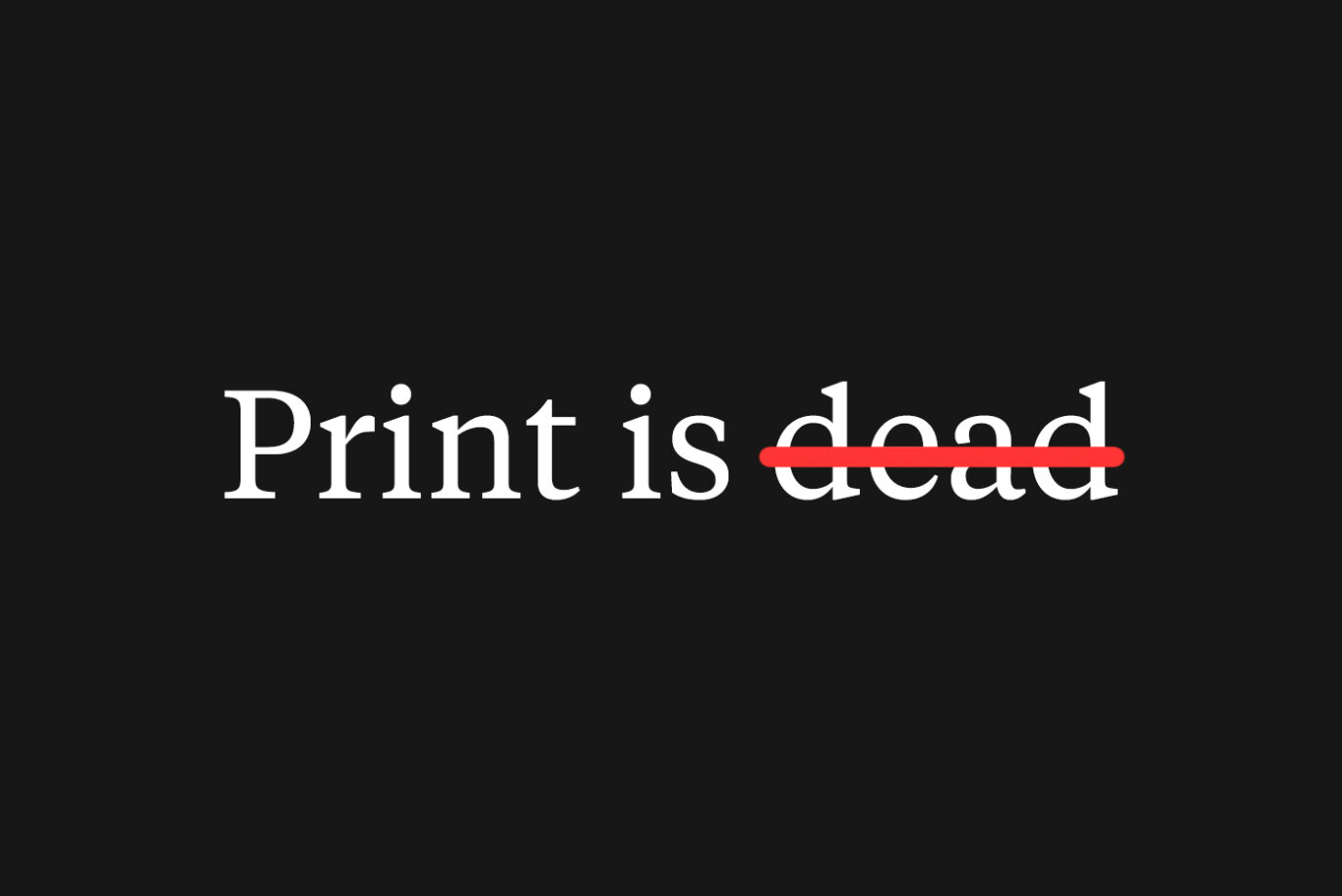
The next big thing in Digital Marketing is… print?
I remember first reading about ‘the paperless office‘ back in 1999, promising better efficiency, eco-friendliness and all-round minimalism. All worthy notions, but here’s the thing — twenty years on, in a digital age of high definition, touch technology and VR enlightenment, print’s still not dead. Sure, digital has completely rewired how we understand, interact and essentially exist on planet earth, but printed comms, archaic as they may seem, shouldn’t be overlooked.
Let’s face it, there’s only so much content we can all absorb from our screens before we hit our daily saturation point. Whilst we all have different tolerances for swiping at the black mirror ultimately we all burn out. This isn’t just a personal gripe, it’s a thing. ‘Monitor fatigue‘, as it’s recently been termed, is a physiological symptom that the majority of us experience, and the number one marketing automation platform and email marketing service in the world just caught on.
Last week, Male Crimp? No, wait…Mail Chimp (you know their campaigns) sent out a digital newsletter to advertise a new product offer seeming to completely oppose everything they’re about – a physically printed and mailed postcard service. At first this might seem crazy, I mean, it’s nearly 2019 and they’re suggesting a print campaign. However, they’re argument is sound – the average lifespan of an email is now just 2 seconds and brand recall directly after seeing a digital ad is just 44%, whereas brand recall from direct mail sits comfortably at around 75%. Essentially, even though we’re all spending more and more time online, ‘about 70% of consumers…regularly go through their mail’, which gives brands a real opportunity to cut through all the noise of an inbox and make a longer lasting impression on the recipient.
Neuroscientific research also shines light on the effectiveness of printed comms now more than ever before. Print – ink on paper – is a truly sensory, emotive medium with which we, mortal humans, physically connect. It stimulates 4 of our 5 traditionally-recognised senses; sight, smell, sound and touch: and this leads to an attribution of value in the content — we invest in the information on a printed page, so better retain it. A recent study involving Norwegian students, belonging to an age group often considered ‘digital natives’, found that those reading from a paperback scored higher on post-reading questions than the group reading the same text from a screen. The researchers suggested that electronic versions of books lack ‘spatiotemporal markers’, physical page positions that we unconsciously map snippets of information to (don’t worry, we had to Google this) instead involving the more abstract and repetitive process of scrolling.
Age is certainly at the centre of the debate concerning digital versus printed comms. Over the past decade it’s become clear that younger people use print to complement their digital consumption whereas older generations use digital to support what they’ve learnt from a piece of print. It’d be naive to target a specific age group with just one medium as research suggests that print remains relevant to all demographics, there’s simply an inversion in weighting. As Mail Chimp suggests, ‘printed postcards work with your online marketing to close the distance between you and your customers.’
What both age demographics do have in common, however, is simple — an appreciation of real quality and an innate desire to really feel things. The tactile nature of print is not just a thrill reserved for the Bibliophiles amongst us, it holds the power to connect us. British researchers have observed that body language is much warmer, and interaction significantly higher, between a mother and child when reading from a paperback than when reading an e-book. That’s because printed matter involves a physical exchange, just like when sharing a business card or handing over a stand-out course brochure to a potential student. Such interactions hold an increasing amount of value in an era where it’s easier to share information than ever before, but often at detriment to our interpersonal skills. With print, quite literally, the medium is the message.






